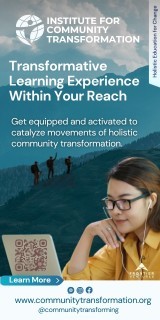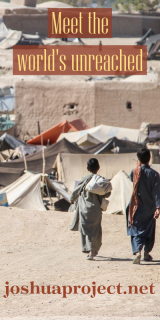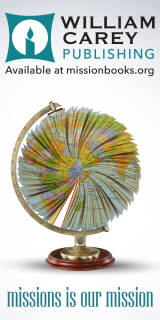Doing Contextualization in Cambodia: Communities of Dialogical Practice

The Gap Between Theory and Practice
Contextualization, especially in highly pluralistic Asia, is needed more than ever in the 21st century. The rise of Asia is unfortunately accompanied by a disenchantment with the West and its religion—Christianity. The pandemic is precipitating reverse globalization and intensifying ethnocentric and nationalistic sentiments.
However, contextualization is a project in malaise. It is an old topic, originally conceptualized in the 1970s. Fifty years on, the gulf between talk and practice has not significantly closed. At three separate forums in early 2021, Asian thought leaders were still appealing to Christians to do contextualization. The question that begs to be answered is, “Why isn’t contextualization implemented?”1
This article is a reflection on promising activities in Cambodia in the last few years. By creating communities of dialogical practice committed to exploring the intersection of faith and culture, the Cambodian Church is inching forward in crafting out a distinct Khmer Christian identity. It is hoped that this report may encourage more robust practices of “being and doing church” in Asian contexts.
Faith and Culture Work by EFC
The “Faith and Culture Committee” of the Evangelical Fellowship of Cambodia (EFC) was started in 2016 for the purpose of researching and teaching contextual theology. Three ongoing projects are “Christian Wedding Ceremony according to Cambodian Culture,” “Christian Birth and Death Ceremonies according to Cambodian Culture” and “Can Cambodian Christians tvaibongkum (worship) Their Parents?” The former two will be published in the Khmer language, and the latter, which was co-presented by Tep Samnang, the Director of EFC and by me at the SEANET mission conference in January 2020, is slated to soon become available in English.
The tvaibongkum project is an interesting one. According to Khmer customs, all children of any age should ritually demonstrate their respect by bowing to their parents on special occasions—this ritual act is called tvaibongkum. However, the Cambodian word tvaibongkum is translated into English and understood as “worship” among Christians. This poses a problem. The issue of Christian prohibition of “worshipping” parents and the ancestors is similar to that caused by the Jewish insistence of circumcision in the first century church. In this article, I thus frame my reflection on the process of contextualization according to some lessons drawn from the landmark debate of Acts 15.
6 Ps of Contextualization
1. Participatory—Being collectivistic in culture, Cambodians do not conceive contextualization as the work of an individual theologian; rather, it is carried out communally and includes diverse voices. The account in Acts 15 provides a model of such a communal and participatory approach. A sharp dispute between two competing views on circumcision had broken out (Acts 15:2), and to resolve the issue, the Jerusalem Council (of apostles and elders) convened before the church. (Acts 15:4,22) After much discussion (vs. 7), a carefully negotiated response was crafted. This narrative shows us that each “stakeholder,” regardless of his/her ideological position, should participate and contribute to the contextualization dialogue so that discussions may be rigorous and a shared decision may be made.
The Evangelical Fellowship of Cambodia (EFC) is comparable to the Jerusalem Council; it is an umbrella association under which churches and Christian organizations are registered. The EFC Faith and Culture committee of eight people, representing heads of denominations, principals of seminaries, and leaders of Christian organizations, organizes forums in different provinces to engage with pastors all over Cambodia. The response to such forums is overwhelming, indicating the relevance and pertinence of the subject matter. “Ninety percent of Cambodian pastors are favorable of doing contextual theology,” said Tep Samnang, the Director of EFC, “some are disagreeable, but it’s okay, in everything there will be some objections.”
2. Practical—One of the most striking features of the Cambodian approach of contextualization is the decision to center the work of theologizing around ritual. The subject of debate in Acts 15, similarly, revolved around a ritual— circumcision.
Tep Samnang explained, “The customs of ka (marriage), kart (birth), and kok (burial) are the three most important things in the life of Cambodian people. To focus on doctrinal theology is challenging for Christians, and even Cambodian pastors.” Ritual, on the other hand, is a Khmer way of life and an Asian spirituality. Ritual is not a pure religious category, as Christians commonly deem so; to evaluate it solely through the tenets of dogma does not justify what ritual means to the whole person and his/her whole life in community.
This primacy of ritual practice over abstract doctrine is also apparent in a conversation I had with two Cambodian monks studying at a Buddhist university. I had asked them what the central Buddhist kolethi (Cambodian Christian word for doctrine) are, and they curiously asked me what I meant as kolethi? It dawned on me that the way faith is practiced in the Christian religion based on the critical analysis of Scriptural text and formulation of doctrinal concepts is not the way Cambodians conceive religion. The Venerable Chuon Nath (1883–1969), the father of Modern Buddhism in Cambodia, taught Buddhism as propriety of behavior, and the proper way to behave as a Cambodian Buddhist is largely expressed ritually, through specific behavioral enactments or customs of relating to one another in daily life and special occasions.
Thus, doing contextual theology through ritual may be considered as an indigenous way of knowing (epistemology). A lot of contextualization done by current scholarship revolves around theological and doctrinal theses—a product of European Enlightenment, privileging mind over body and reason over experience. This could be one explanation for the tardiness of the contextualization project in Asia; we could be using the wrong tool for the job.
3. Pastoral—Doing contextualization is not just about acquiring and applying yet another new set of methodological techniques; rather, it is about nurturing a pastoral posture emanating lovingkindness (metta)—a cherished Khmer virtue. In this setting, metta is expressed as a willingness to patiently listen to the other, to empathetically understand and sincerely appreciate the other.
In the contextual approach employed by the Cambodian Church, exegeting culture is more than intellectually analysing the doctrinal meanings and functions of ritual acts. One needs to intuitively capture the affective meanings as well—the psychological, familial, social, and moral implications. Contextualization is not a rationalistic and evaluative exercise, assessing “right” from “wrong.” Rather, it calls for a “gentle, humble” and pastoral disposition toward the other, seeking to appreciate and affirm “whatever is noble, whatever is right, whatever is pure.” (Matt. 11:29, Phil. 4:8)
Paul and Barnabas exhibited this kind and pastoral posture. In Acts 15, they noted that circumcision “troubled their [Gentile] minds” (Acts 15:24), and made it “difficult for the Gentiles who are turning to God.” (Acts 15:19) It is apparent that they empathized with how the Gentiles thought and felt about the ritual practice of circumcision. Compassion superseded orthodoxy.
Similarly, listening to Cambodians, tvaibongkum is understood as a profoundly reverential and honorable way of demonstrating respect, gratitude and affection to one’s parents. Not to do so is an unthinkable behavior. Tvaibongkum is more of a social and moral category, and does not carry the same weight of religious nuance of “worship” implicit in Christian parlance.
4. Perceptive—One of the key points of Barnabas and Paul’s persuasion in the Acts 15 debate was the apparent evidence of God’s presence among the uncircumcised Gentiles through signs and wonders. (Acts 15: 12) Peter and James also recognized the undeniable movement of the Holy Spirit among the Gentiles. (Acts 15: 7-9, 13, 15, 17, 28) “See, I am doing a new thing! Now it springs up; do you not perceive it? I am making a way in the wilderness and streams in the wasteland.” (Isa. 43:19) Contextualization calls for prayerful discernment of God at work in unfamiliar yet creative ways. It invites us to exercise restraint from being judgmental and too quickly labeling something different as heresy or syncretism.
Perceptive intuition is not an invalid way of knowing, according to Buddhist epistemology. In addition to the faculties of reason, perception is a form of knowing that comes from contemplating lived experiences, and raising insights leads to the realization of truth. Interestingly, in Acts 17, Paul invited the Athenians to “feel their way toward [God] and find Him.” (Acts 17:27) It is apparent that in the philosophical tradition of the Age of Reason, perception has been dismissed and even ridiculed.
In the tvaibongkum project, research revealed at least three cases in which godly men and women of vibrant churches are creating innovative ways to redeem the custom of demonstrating reverence to parents without compromising Christian allegiance to God. God is at work, and the Christian faith is blossoming in new ways in Khmer soil.
5. Pro-creative—The Jewish Council saw that God was doing something new among the Gentiles, and what they saw renewed their hermeneutical paradigm and transformed their theological interpretation. Re-reading an old prophecy in an illuminating new way, James redefined what “people of God” meant: from one that was ethnocentric, exclusively referring to Israel as God’s chosen, to one that includes “the rest of mankind” and “all the Gentiles.” (Acts 15:17) Similarly, Paul had a more nuanced interpretation of the doctrine of circumcision. Emphasizing the spirit of the law rather than its letter, he censured the legalistic demands of physical circumcision and preached on the circumcision of the heart by the Spirit. (Rom. 2:25-29)
Instead of imposing predetermined theological conceptions, the Jerusalem Church allowed God to transform their long-established theological ideas. The hermeneutical process that we see here is one that oscillates between text and context, one that is deeply rooted in the Word and yet sensitive to the work of the Holy Spirit in the present and to God’s continued authorship in writing history.
Re-reading Scriptures through Khmer eyes, it was noted that Moses bowed before his father-in-law, Jethro, a Midianite priest (Exod. 18:7), King Solomon bowed before his mother, Bathsheba (1 Kings 2:19), and Abraham even bowed before three strangers (Gen. 18:2) and the Hittites. (Gen. 23:7) The Hebrew word used for “bow” in all these verses is shachah, the same word for “worship” to God (Gen. 22:5) and the prohibition of “worship” of idols. (Exod. 20:5) The Khmer notion of tvaibongkum parallels the Hebrew practice of shachah. As explained to me by a Cambodian monk, the word tvaibongkum simply refers to an outward demonstration of respect and does not carry the meaning of worship as Christians define it; another Khmer word bozhea would come closer to worship.2
6. Peaceable—In Acts 15, the Jewish Council did not just “repeal” the law of circumcision for the Gentiles, they negotiated a holistic response. They recommended that the Gentiles followed certain purity codes so as to maintain the unity of fellowship between Jews and Gentiles. The Council exercised the principle of 1 Cor. 10:32-33: not being a stumbling block to Jews, Gentiles or the Church of God. Contextualization involves a complex negotiation of different relations.
Leveraging the core Khmer value of harmony and conflict-avoidance, the Cambodian process of contextualization endeavors towards peace-building relations by honoring indigenous socio-cultural norms:
- a) Deference is given to Christian elders. It took more than a year to seek the endorsement of certain senior pastors who are well respected in the Cambodian community. The contextualization endeavor is owned and led by mainstream players; it is not a fringe activity of a maverick or young leader who has been groomed in foreign methods and manners.
- b) Respect is given to the Buddhist community. Christian pastors in the tvaibongkum project engaged with Buddhist monks, temple leaders and elders in the community, and even engaged with explaining the Christian dilemma and in seeking suggestions.
- c) Esteem is given to the governing authorities. Christian pastors and leaders are keenly aware of the importance of developing positive relations with the local governing authorities. The book, Christian Wedding Ceremony according to Cambodian Culture, when published this year, will be gifted to the Ministry of Cult and Religion to demonstrate Christian cooperation to “Khmerize” Christianity.
Envisioning Communities of Dialogical Practice
This Cambodian case study provides some nuanced insights for an innovative practice of contextualization. Building on the concepts of critical contextualization and the hermeneutical community endowed to us by Paul Hiebert, I wish to describe a community of dialogical practice based on a reading of Acts 15. The work of contextualization by such a community of dialogical practice is:
- participatory—it involves a community and invites its members not to just sit and talk with one another, but actively engage with Christians and non-Christians outside the inner circle, experimenting and innovating practices, and critically reflecting together.
- practical—it does not dichotomize faith and life, doctrine and practice; theologizing is performed within the locus of ritual action.
- pastoral—rather than executing contextualization as an analytical project with an evaluative mentality, it is approached as an appreciative inquiry with an empathetic heart. Change is not imposed from without, but compelled from within.
- perceptive—contextualization calls for intuitive discernment. It is not a unilinear process employing didactics; it is a spiral process employing dialogics.
- pro-creative—instead of translation of forms and/or meanings, it is co-creation, birthing something anew.
- peaceable—contextualization by a community of dialogical practice is not merely a theological exercise; it is a relational endeavor and an intricate negotiation.
I hope that this report of the Cambodian Church may encourage others to persevere in exploring and experimenting new localized expressions of faith for the sake of the gospel.
Contextualization is a very difficult thing to do. It challenges deeply ingrained understandings and practices and demands radical and uncomfortable shifts in mindsets.








comments